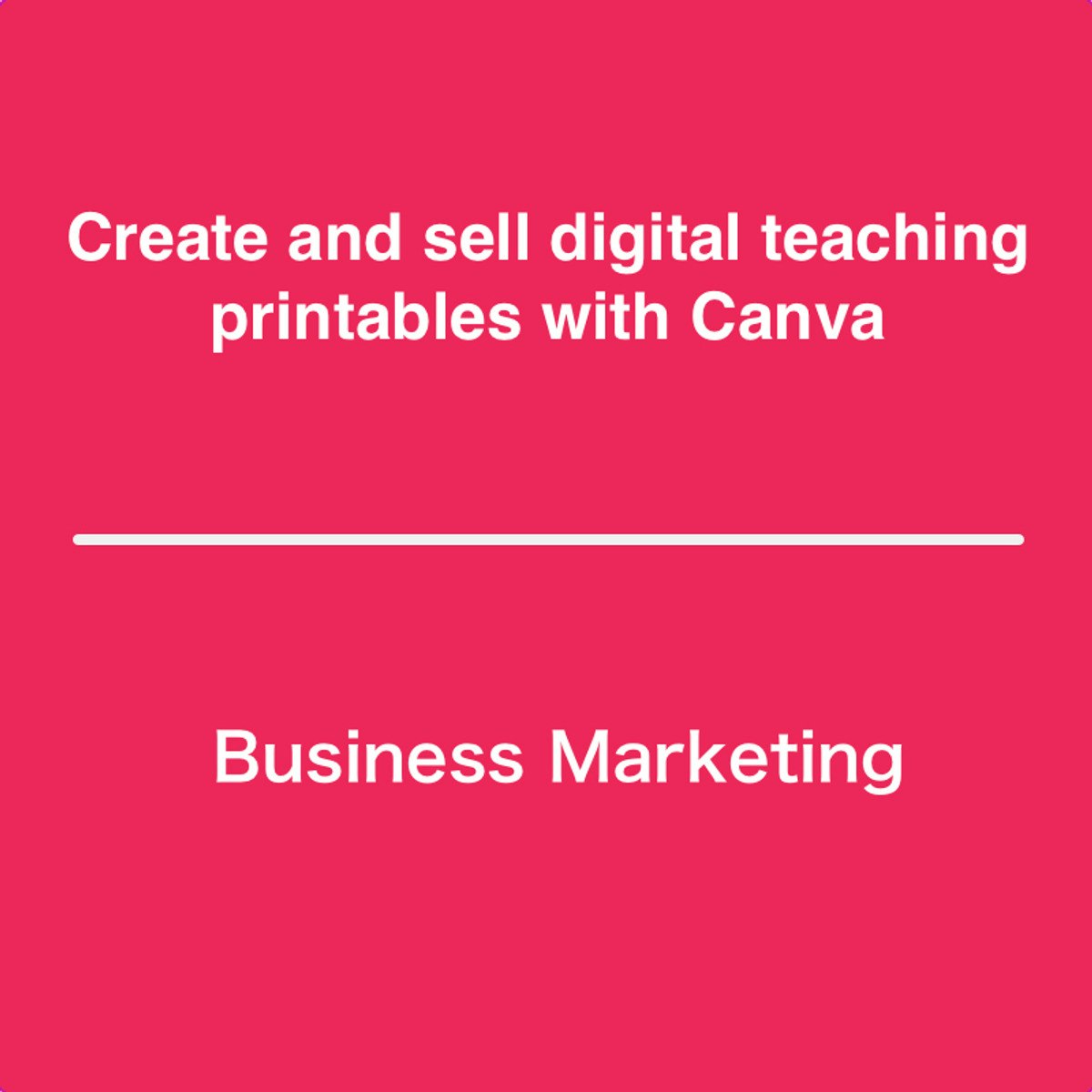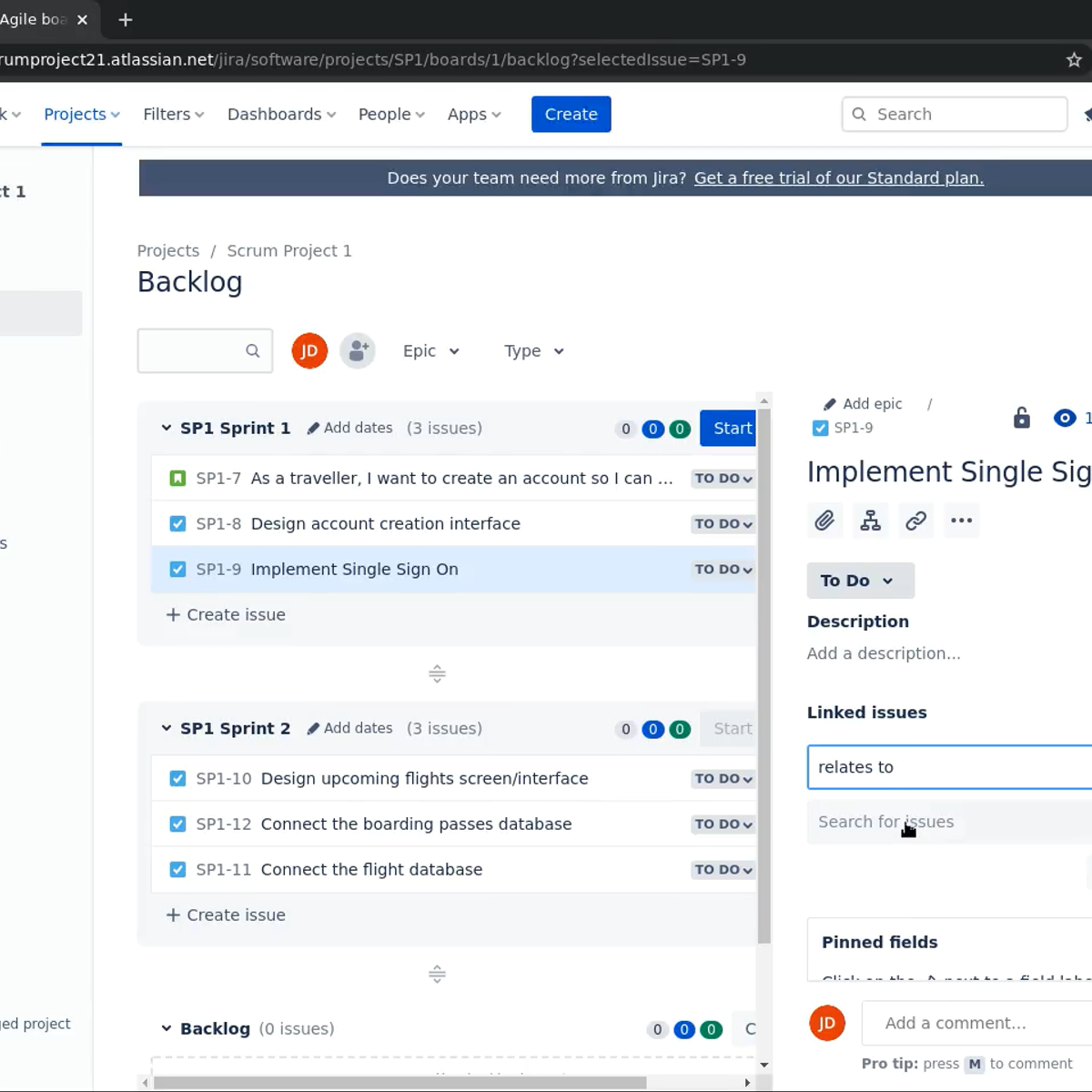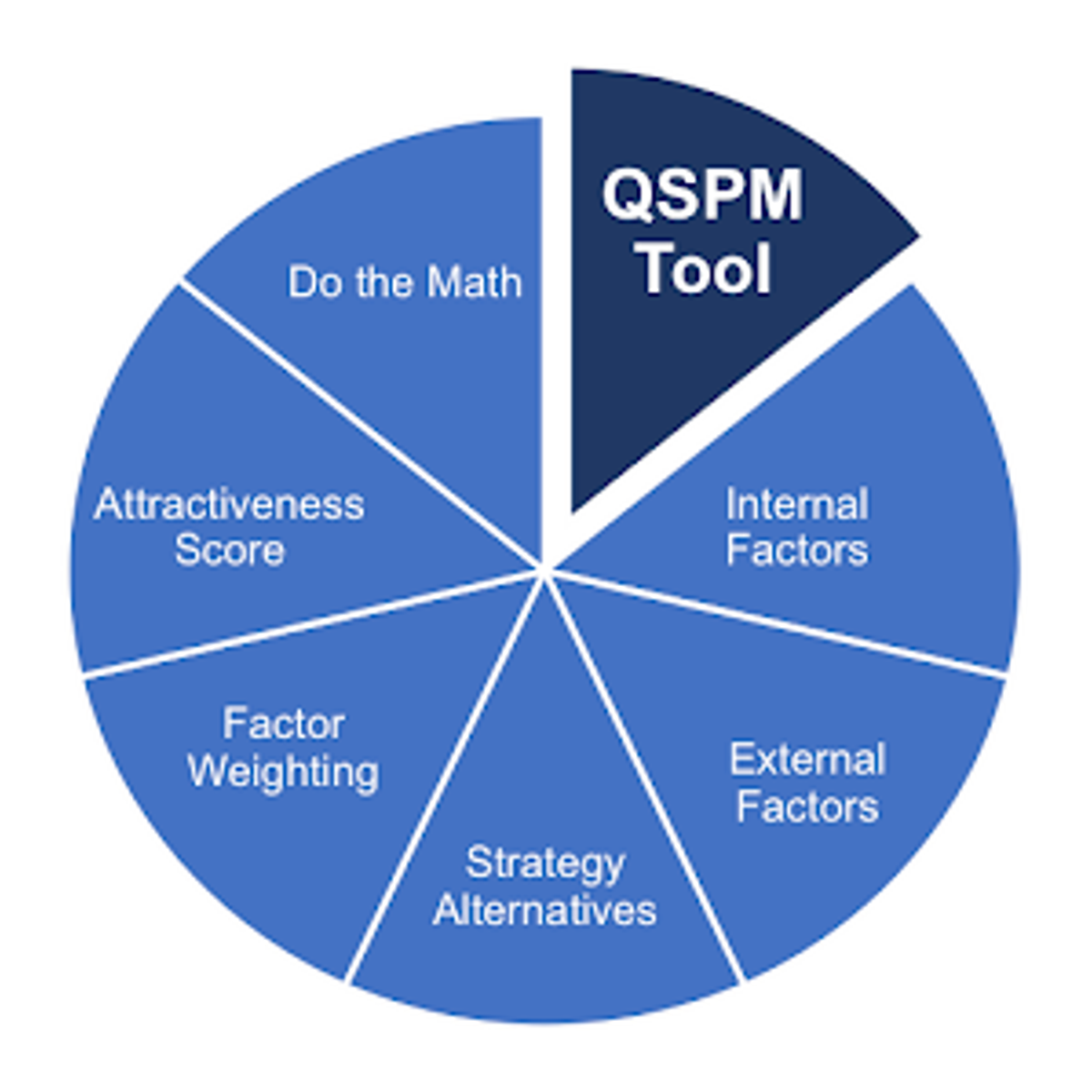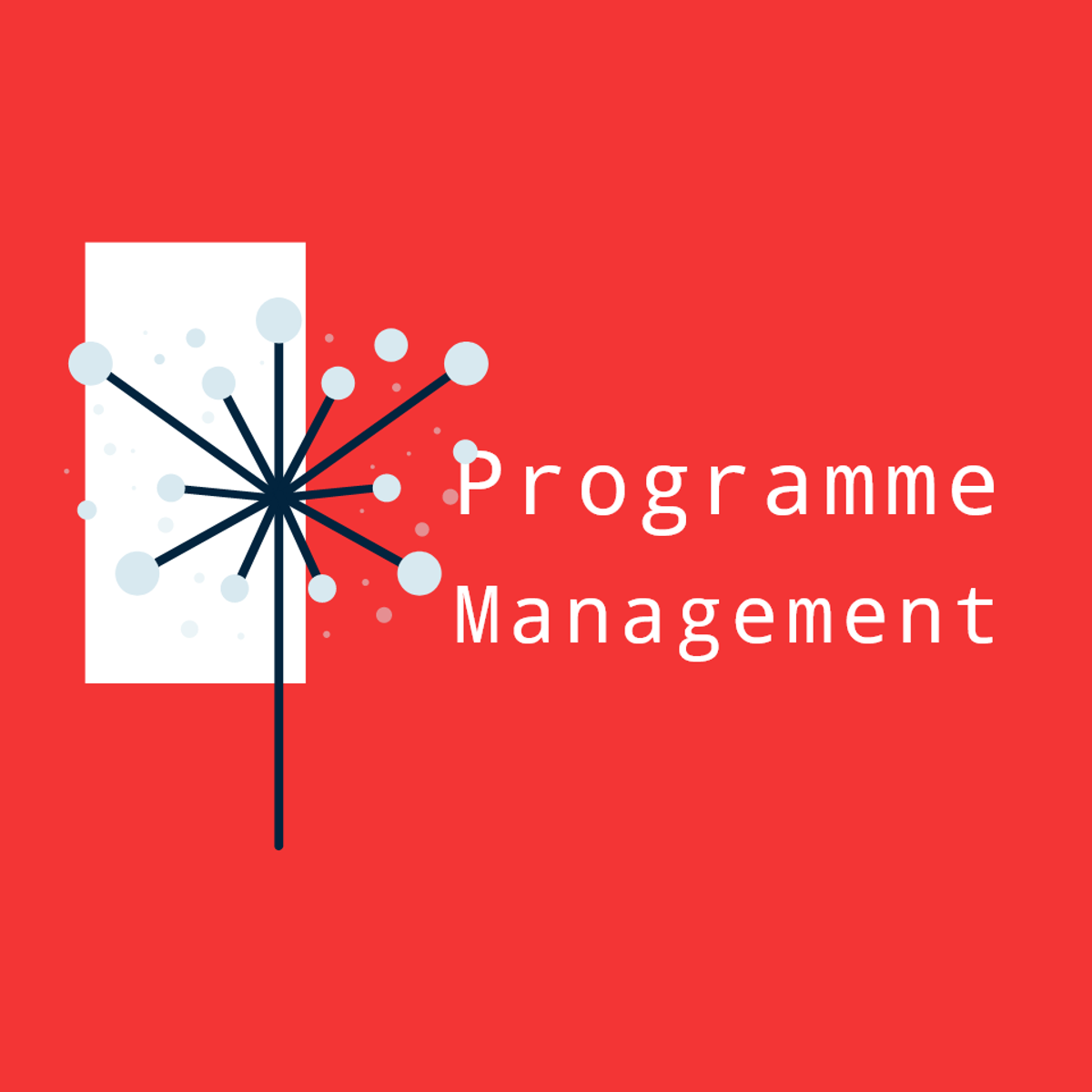Back to Courses









Business Strategy Courses - Page 30
Showing results 291-300 of 543

Create and Sell Digital Teaching Printables with Canva
By the end of this project, you will create a variety of templates for teaching printables that you can offer for free or sell in the marketplace using Canva.
You will be able to incorporate a color scheme, images, and other design elements for aesthetically pleasing and value added business marketing collateral. Creating high quality teaching printables is the perfect way to offer digital products to your students, blog readers or clients to market your business and grow it.
This project will include intermediate to advanced level skills using the free version of Canva.
Note: This course works best for learners who are based in the North America region. We’re currently working on providing the same experience in other regions.

Research Instruments and Research Hypotheses
This course concentrates on the design and development of different research instruments. In this vein, the focus will be placed on the development of an instrument design strategy, scales of measurement and the components of the research report. The course begins by looking at the questionnaire development process with a focus on questionnaire design, question type and wording, pretesting and revising. We will consider the identification of scales of measurement and operationalisation, and the design of an online questionnaire. We are going to discuss sources of measurement differences, and the assessment of the reliability of measurements. The issue of the validity of measurements and the various types of validity will also be explored, as well as attitude measurement. We will discuss data preparation and processing, data coding, adjustment, and data analysis using multivariate data approaches. We are also going to explore frequency distribution and measures of location, variability and shape. The course ends with a discussion on hypothesis testing and the use of statistics relevant to cross-tabulations. We will discuss parametric and non-parametric tests in hypothesis testing and group comparison as well as the different sections of the research report.

Social Impact Strategy with Goldman Sachs 10,000 Women
This elective course will help you to make sure your business has the influence you want it to have in the world, by developing a social impact that is meaningful to you and your stakeholders. This course supplements the Goldman Sachs 10,000 Women course collection, designed for entrepreneurs ready to take their business to the next level.
Social impact can take many forms for different people and businesses. It can also be a great way to promote staff engagement and help your business to grow. This course will help you identify the values that are essential to you and how to embed them in your operations so that your business can have the social impact you want, in the areas you want.
You will learn how to identify what values are key for you. You will then reflect on whether these values are mirrored within your business and its operations and if this has the social impact you wish. Subsequently, you will examine how to effectively embed these values into your core business processes so that your organisation can actively create change.
As part of the course, you will explore tools that can support you in your mission to embed social responsibility and purpose in your business and learn how to measure your business’ success in social impact.
This course is one of three elective courses complementing the core 10,000 Women course collection. After completing this course, you may wish to explore other courses from the 10,000 Women collection to suit your needs, such as: Fundamentals of Operations with Goldman Sachs 10,000 Women or Fundamentals of Management with Goldman Sachs 10,000 Women.
The 10,000 Women course collection offers a truly flexible online learning experience. You have the freedom to approach the program in any way that works for you – take any course, or combination of courses, to tailor your learning journey to your individual business growth needs.
Find out more about the Goldman Sachs 10,000 Women collection in the FAQs.

How to create a Jira SCRUM project
In this 2 hour long project you will create a SCRUM project in Jira, exploring the SCRUM agile methodology and familiarizing with all of its elements. You will create user stories and tasks, plan and action sprints, manage the backlog and sprints with the board, create epics, add dependencies and finally creating burn-down charts to evaluate the progression of your sprints.

Strategic management: Be competitive
The ability to think strategically in today’s global, high-tech business environment is critical to ensuring your organisation survives – and grows – into the future. By breaking down business strategy and value creation to its essential elements, you’ll develop your strategic thinking skills. And through structured learning activities including video lectures, quizzes, discussion prompts and written assessments you’ll discover how to improve your organisation’s competitiveness. This course focuses on the key principles behind the latest thinking in value co-creation, strategy and marketing, and teaches you how to apply them. By learning how to continuously plan, monitor, analyse and assess all that is necessary for an organisation to meet its goals and objectives, you will be better prepared to take your organisation forward in a viable strategic direction.

Master the Art of Data Visualization With Tableau Public
Tableau is widely recognized as one of the premier data visualization software programs. For many years access to the program was limited to those who purchased licenses. Recently, Tableau launched a public version that grants the ability to create amazing data visualizations for free. Account members can also share and join projects to collaborate on projects that can change the world.
By the end of this project, we will learn how to create an account, create visualizations, and how to share visualizations with others.
Note: This course works best for learners who are based in the North America region. We’re currently working on providing the same experience in other regions.

Introduction to Digital Transformation Part 2
This course was designed to further your understanding of digital transformation so you can leverage digitization to improve business function performance. You'll learn how to build out your core digital infrastructure, with a focus on cloud computing, data integrity and digital platforms. You'll explore how digitization is transforming various business functions and organization units and learn how to
identify the key drivers of and risks inherent in digital transformation, and consider the impact of emerging trends. By the end of this course, you'll be able to analyze your industry's digital transformation efforts and recommend new approaches to maximize performance.

Fashion Retail Transformation
In this course, Parsons faculty and industry experts dive deep into the transformation of fashion retail. You’ll explore the fusion of retail and entertainment and the increasing importance of omnichannel client relationships. Through an examination of disruptive retail innovations, such as on-demand delivery and virtual reality, you’ll learn how industry leaders are keeping up with customer expectations. You’ll look at e-commerce strategies through the lens of listening to and applying customer feedback and how brands stay relevant in the direct-to-consumer marketplace. Finally, you’ll consider the post-COVID consumer and how e-commerce and remote clienteling can be leveraged within the fashion business to ensure customer satisfaction and loyalty.
In this course, you'll be learning from the following Parsons faculty and industry experts:
- Caryn Pang, Parsons Faculty, Senior Consultant
- Ron Thurston, Author, RETAIL PRIDE
- Keanan Duffty, Parsons Faculty
- Patrick Klesius, Parsons Faculty, Enterprise Data Architecture & Analytics, David Yurman

How to Use the QSPM to Analyze and Set the Right Strategy
In this 2-hour long project-based course, you will learn how to analyze, and set the right strategic direction for your organization with Quantitative Strategic Planning Matrix (QSPM). The QSPM is designed to assess and determine the extent that alternative strategies enable the firm to effectively take advantage of external opportunities, mitigate external threats, capitalize on internal strengths, and improve upon internal weaknesses. As a strategic-management tool, the process can be described as an objective, logical, systematic approach for making major decisions in an organization. In order to analyze and set the right strategy for our organization, we will use a spreadsheet to sketch, conduct the analysis, and determine the best strategic direction, among other alternatives. Also, for us to practically demonstrate how to apply the QSPM to set the optimal strategic direction, we have created an energy services company we want to use for the analysis. The idea is to give you a template that would enable you to apply the model to analyze any organization. The project is for business leaders who want to set optimal strategic direction for their organizations given other competing alternatives. Also, for strategist who are interested in helping organization in making informed strategic decisions. At the end of the project, you will be able to design, analyze, and set the optimal strategy for your organization using the QSPM

Program Communications Planning in ClickUp
By the end of this guided project, you will be fluent in creating Program Communications artefacts for the Identification/Planning Phase for diverse programs. You will utilise a logical diagramming plan in an agile environment to develop the solution. This will enable you to identify and classify the required components for communication strategy and planning. Furthermore, it will help develop a structural model for learning about the field of Program Management.
If you are interested in building up the knowledge leading to this guided project, the following is the link to:
[ Developing Programme Management Blueprint with ClickUp]
https://www.coursera.org/projects/program-blueprint
[Advanced Programme Planning Phases Framework in ClickUp]
https://www.coursera.org/projects/program-advanced-planning
This Guided Project is essential for individuals wanting to learn about the field, or looking to transition into working in Program Management. This guided project is designed to engage and harness your visionary and exploratory abilities. You will use proven models in an agile environment with ClickUp to engage in a hands-on learning experience.
Popular Internships and Jobs by Categories
Browse
© 2024 BoostGrad | All rights reserved


